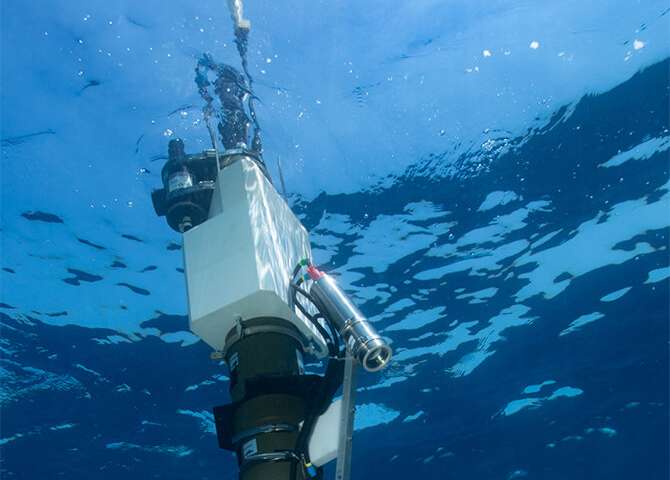Carbon sequestration in oceans powered by fragmentation of large organic particles
by Bob Yirka
A team of researchers from the National Oceanography Centre, Sorbonne Université and CNRS Villefranche-sur-Mer, Plymouth Marine Laboratory, and the National Centre for Earth Observations, has found evidence of fragmentation of large organic particles into smaller ones, accounting for roughly half of the particle loss in the oceans. In their paper published in the journal Science, the group describes testing carbon sequestration in several ocean locations and what they found. Aditya Nayak and Michael Twardowski with Florida Atlantic University have published a Perspective piece discussing the work by the team in the same journal issue.
Several decades ago, scientists discovered that the oceans can be divided into three main depths: the epipelagic, which is the first 200 meters below the surface; the mesopelagic, which spans depths between 200 and 1000 meters and the abyssal zone, which is everything below the mesopelagic zone down to the ocean floor. Subsequently, researchers discovered that the ocean absorbs 10 to 12 billion metric tons of carbon dioxide from the atmosphere, but only 30 percent of it makes it to the seafloor. For the past 20 years, scientists have been working to try to understand what happens to the rest. In this new effort, the researchers have found where up to half of the missing carbon goes.
Carbon is absorbed directly by the oceans and is taken up by sea life. As those organisms die, they and the carbon in their tissues fall to lower "depths"—some of that material makes it all the way to the ocean floor. But some of it also clumps together with other falling particles and remains suspended in the water in the mesopelagic zone. In this new effort, the researchers studied such clumps in several ocean locations using advanced optical sensors connected to bobbers. Data from the sensors confirmed what the researchers had suspected—that the large clumps often break apart into smaller clumps. This allows the clumps to hold on to more carbon. The researchers suggest this fragmentation can account for between 49 and 22 percent of the missing carbon. More work is required to account for the remaining missing carbon.
More information: Nathan Briggs et al. Major role of particle fragmentation in regulating biological sequestration of CO2 by the oceans, Science (2020). DOI: 10.1126/science.aay1790
Journal information: Science
© 2020 Science X Network